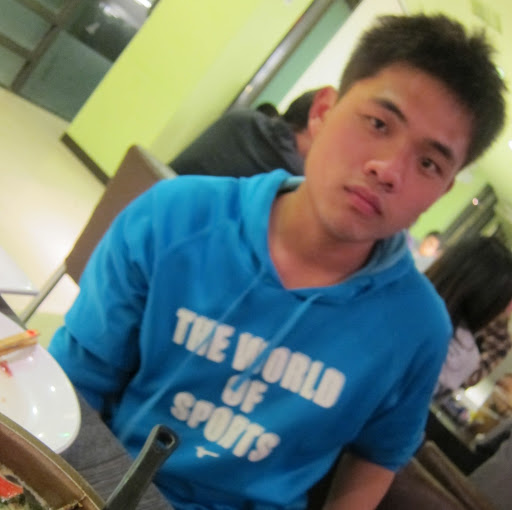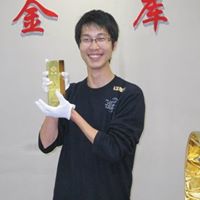Feng Yang
age ~62
from Palo Alto, CA
- Also known as:
-
- Seng Yang
- Yang Feng
- Phone and address:
-
1063 Embarcadero Rd, Palo Alto, CA 94303
4082433754
Feng Yang Phones & Addresses
- 1063 Embarcadero Rd, Palo Alto, CA 94303 • 4082433754
- San Jose, CA
- Laurel, MD
- Santa Clara, CA
- Buffalo, NY
Us Patents
-
Film Thickness Measurements Using Light Absorption
view source -
US Patent:6573999, Jun 3, 2003
-
Filed:Jul 14, 2000
-
Appl. No.:09/615964
-
Inventors:Feng Yang - San Jose CA
-
Assignee:Nanometrics Incorporated - Milpitas CA
-
International Classification:G01B 1105
-
US Classification:356632, 356630
-
Abstract:A method of measuring film thickness is based on the films attenuation of optical characteristics, such as absorption band or absorption bands, of underlying material. The thickness of the film is determined based on a correlation between the thickness of the film and the strength of the absorption band (such as a peak or valley area) of the underlying material. The correlation is generated using an identified absorption band of the underlying material, which may be determined empirically or using a library of information, and the reflectance spectra produced by calibration samples, each having a different thickness of film.
-
Low Power Memory Sub-System Architecture
view source -
US Patent:7209404, Apr 24, 2007
-
Filed:Aug 5, 2005
-
Appl. No.:11/198563
-
Inventors:Sho-Mo Chen - Cupertino CA, US
Fei Ye - Cupertino CA, US
Feng Yang - Plano TX, US -
Assignee:ForteMedia Inc. - Cupertino CA
-
International Classification:G11C 5/14
-
US Classification:365226, 365227
-
Abstract:Disclosed methods and apparatus provide embedded memory architectures that lower the overall operational power consumption of memory arrays without sacrificing memory access speed. Because in large memory arrays the leakage current is a considerable portion of the overall power consumption, leakage reduction in memory arrays, manufactured by advanced processing technologies, is a major challenge. To reduce leakage, methods and apparatus are presented for memory access and for power- and ground-supply monitoring and management at memory sub-array level.
-
Method And Apparatus For Providing Passive User Identification
view source -
US Patent:20120167170, Jun 28, 2012
-
Filed:Dec 28, 2010
-
Appl. No.:12/979698
-
Inventors:Weidong Shi - Windsor, CA
Jun Yang - Milpitas CA, US
Feng Yang - Stanford CA, US
Yingen Xiong - Mountain View CA, US -
International Classification:G06F 7/04
-
US Classification:726 2
-
Abstract:A method for providing passive user identification may include causing selective processing of data indicative of characteristics of a user of a device by aggregating one or more modality specific biometric classification processes conducted in background operation of the device, comparing the selectively processed data to a profile of a currently logged in or default user to determine a likelihood that the user corresponds to the currently logged in or default user, and selectively implementing an active authentication process based on a result of the determining. A corresponding apparatus and computer program product are also provided.
-
Systems And Techniques For Retraining Models For Video Quality Assessment And For Transcoding Using The Retrained Models
view source -
US Patent:20220415039, Dec 29, 2022
-
Filed:Nov 26, 2019
-
Appl. No.:17/762289
-
Inventors:- Mountain View CA, US
Hossein Talebi - San Jose CA, US
Peyman Milanfar - Menlo Park CA, US
Feng Yang - Sunnyvale CA, US -
International Classification:G06V 10/98
G06V 10/82
G06V 20/40
G06N 3/04 -
Abstract:A trained model is retrained for video quality assessment and used to identify sets of adaptive compression parameters for transcoding user generated video content. Using transfer learning, the model, which is initially trained for image object detection, is retrained for technical content assessment and then again retrained for video quality assessment. The model is then deployed into a transcoding pipeline and used for transcoding an input video stream of user generated content. The transcoding pipeline may be structured in one of several ways. In one example, a secondary pathway for video content analysis using the model is introduced into the pipeline, which does not interfere with the ultimate output of the transcoding should there be a network or other issue. In another example, the model is introduced as a library within the existing pipeline, which would maintain a single pathway, but ultimately is not expected to introduce significant latency.
-
Evaluating Visual Quality Of Digital Content
view source -
US Patent:20220358537, Nov 10, 2022
-
Filed:Aug 6, 2020
-
Appl. No.:17/760535
-
Inventors:- Mountain View CA, US
Luying Li - Sunnyvale CA, US
Feng Yang - Sunnyvale CA, US
Junjie Ke - East Palo Alto CA, US
Xiyang Luo - Mountain View CA, US
Hao Feng - Sunnyvale CA, US
Chao-Hung Chen - Milpitas CA, US
Wenjing Kang - Santa Clara CA, US
Zheng Xia - Palo Alto CA, US
Yicong Tian - Mountain View CA, US
Xia Li - Sunnyvale CA, US
Han Ke - Sunnyvale CA, US -
International Classification:G06Q 30/02
-
Abstract:Systems, devices, methods, and computer readable medium for evaluating visual quality of digital content are disclosed. Methods can include identifying content assets including one or more images that are combined to create different digital components distributed to one or more client devices. A quality of each of the one or more images is evaluated using one or more machine learning models trained to evaluate one or more visual aspects that are deemed indicative of visual quality. An aggregate quality for the content assets is determined based, at least in part, on an output of the one or more machine learning models indicating the visual quality of each of the one or more images. A graphical user interface of a first computing device is updated to present a visual indication of the aggregate quality of the content assets.
-
Watermark-Based Image Reconstruction
view source -
US Patent:20220335560, Oct 20, 2022
-
Filed:May 12, 2019
-
Appl. No.:17/764445
-
Inventors:- Mountain View CA, US
Feng Yang - Sunnyvale CA, US
Xiyang Luo - Pasadena CA, US -
International Classification:G06T 1/00
G06T 9/00
G06T 3/40
G06N 3/04 -
Abstract:A computer-implemented method that provides watermark-based image reconstruction to compensate for lossy encoding schemes. The method can generate a difference image describing the data loss associated with encoding an image using a lossy encoding scheme. The difference image can be encoded as a message and embedded in the encoded image using a watermark and later extracted from the encoded image. The difference image can be added to the encoded image to reconstruct the original image. As an example, an input image encoded using a lossy JPEG compression scheme can be embedded with the lost data and later reconstructed, using the embedded data, to a fidelity level that is identical or substantially similar to the original.
-
Evaluating Visual Quality Of Digital Content
view source -
US Patent:20220301141, Sep 22, 2022
-
Filed:Aug 6, 2020
-
Appl. No.:17/612372
-
Inventors:- Mountain View CA, US
Xiyang Luo - Mountain View CA, US
Feng Yang - Sunnyvale CA, US
Junjie Ke - East Palo Alto CA, US
Yicong Tian - Mountain View CA, US
Chao-Hung Chen - Milpitas CA, US
Xia Li - Sunnyvale CA, US
Luying Li - Sunnyvale CA, US
Wenjing Kang - Santa Clara CA, US -
International Classification:G06T 7/00
G06V 10/82 -
Abstract:Systems, devices, methods, and computer readable medium for evaluating visual quality of digital content are disclosed. Methods can include training machine learning models on images. A request is received to evaluate quality of an image included in a current version of a digital component generated by the computing device. The machine learning models are deployed on the image to generate a score for each quality characteristic of the image. A weight is assigned to each score to generate weighted scores. The weighted scores are combined to generate a combined score for the image. The combined score is compared to one or more thresholds to generate a quality of the image.
-
Generating Quantization Tables For Image Compression
view source -
US Patent:20230130410, Apr 27, 2023
-
Filed:Apr 17, 2020
-
Appl. No.:17/918170
-
Inventors:- Mountain View CA, US
Feng Yang - Sunnyvale CA, US
Hossein Talebi - San Jose CA, US -
International Classification:G06T 9/00
G06T 3/40 -
Abstract:Methods, systems, and computer programs encoded on a computer storage medium, that relate to generating quantization tables that are used during digital image compression of a digital image. Multiple training images are obtained. A model can be trained using the training images to generate a quantization table that can be used during encoding of an input image. For each training image, a quantization table can be obtained using the model. Using the quantization table, an encoded digital image is obtained for the training image. Using the encoded digital image and the training image, an image quality loss and a compression loss can be determined. An overall loss of the model can be determined by combining the image quality loss and the compression loss for the training image. The model can be updated based on the overall loss.
Name / Title
Company / Classification
Phones & Addresses
Chief Technology Officer
Fortemedia, Inc.
Semiconductors and Related Devices
Semiconductors and Related Devices
810 E Arques Ave, Sunnyvale, CA 94085
Network Engineer
U S Dept of Health and Human Services
Associations
Associations
200 Independence Ave SW, Washington, DC 20201
900 2 St NE #211, Washington, DC 20201
2026190257, 2024089520
900 2 St NE #211, Washington, DC 20201
2026190257, 2024089520
ASIA PROGRESSIVE SOLUTIONS, LLC
CAC INTERNATIONAL METALS INC
T.E.M. INTERNATIONAL, INC
US-CHINA CULTURE & BUSINESS ASSOCIATION, LTD
Chief Technology Officer
FORTEMEDIA, INC
Mfg Computer Storage Devices · Mfg Semiconductors · Mfg Semiconductors/Related Devices · Computer Storage Device Manufacturing
Mfg Computer Storage Devices · Mfg Semiconductors · Mfg Semiconductors/Related Devices · Computer Storage Device Manufacturing
4051 Burton Dr, Santa Clara, CA 95054
810 E Arques Ave, Sunnyvale, CA 94085
19050 Pruneridge Ave, Cupertino, CA 95014
4087168028, 4088618088, 4087168011
810 E Arques Ave, Sunnyvale, CA 94085
19050 Pruneridge Ave, Cupertino, CA 95014
4087168028, 4088618088, 4087168011
President
JETNAS, INC
46520 Fremont Blvd STE 602, Fremont, CA 94538
46560 Fremont Blvd, Fremont, CA 94538
46560 Fremont Blvd, Fremont, CA 94538
Resumes

Consultant
view sourceLocation:
160 Sage Ave, Morgan Hill, CA 95037
Industry:
Semiconductors
Work:
Xilinx Jan 2006 - Sep 2013
Senior Engineer
Xilinx Jan 2006 - Sep 2013
Staff Engineer
Xilinx Aug 2004 - Sep 2005
Senior Field Application Engineer
Cisco 2000 - 2004
Hardware Engineer Iv
2000 - 2004
Consultant
Senior Engineer
Xilinx Jan 2006 - Sep 2013
Staff Engineer
Xilinx Aug 2004 - Sep 2005
Senior Field Application Engineer
Cisco 2000 - 2004
Hardware Engineer Iv
2000 - 2004
Consultant
Education:
Portland State University
Master of Science, Masters, Computer Engineering
Master of Science, Masters, Computer Engineering
Skills:
Field Programmable Gate Arrays
Verilog
System on A Chip
Serdes
Ethernet
Application Specific Integrated Circuits
Data Analysis
Characterization
Testing
Functional Verification
Xilinx
Programmable Logic
Xilinx Vivado
Xilinx Ise
Integration
Semiconductors
Simulations
Mixed Signal
Integrated Circuits
Electronics
Python
Embedded Systems
C++
Vhdl
Perl
Unix
Linux
C (Programming Language
Chinese
Rtl Design
Logic Design
Logic Synthesis
Jmp
Timing Closure
Computer Architecture
Tcl
Modelsim
Pcie
Cadence
Eda
Static Timing Analysis
Uvm
System Verilog
Transceivers
Axi
Silicon Validation
Vcs
Verilog
System on A Chip
Serdes
Ethernet
Application Specific Integrated Circuits
Data Analysis
Characterization
Testing
Functional Verification
Xilinx
Programmable Logic
Xilinx Vivado
Xilinx Ise
Integration
Semiconductors
Simulations
Mixed Signal
Integrated Circuits
Electronics
Python
Embedded Systems
C++
Vhdl
Perl
Unix
Linux
C (Programming Language
Chinese
Rtl Design
Logic Design
Logic Synthesis
Jmp
Timing Closure
Computer Architecture
Tcl
Modelsim
Pcie
Cadence
Eda
Static Timing Analysis
Uvm
System Verilog
Transceivers
Axi
Silicon Validation
Vcs
Languages:
English

It Engineer
view sourceIndustry:
Information Technology And Services
Work:
Lenovo
It Engineer
It Engineer
Education:
University of Electronic Science and Technology of China 2005 - 2012
Masters
Masters
Skills:
Leadership
Photoshop
Management
Microsoft Office
Microsoft Word
Powerpoint
Research
Microsoft Excel
Training
Sales
Photoshop
Management
Microsoft Office
Microsoft Word
Powerpoint
Research
Microsoft Excel
Training
Sales

Feng Yang
view sourceLocation:
San Francisco, CA
Industry:
Computer Software
Work:
Asml 2011 - 2012
Senior Staff Engineer
Aptus Grc Jun 2010 - May 2011
Chief Architect
Aptus Grc Jun 2010 - Mar 2011
Product Development Manager and Architect
Revitas 2009 - May 2010
Senior Development Manager
Fox Technologies Mar 2007 - Jan 2010
Director of Engineering
Senior Staff Engineer
Aptus Grc Jun 2010 - May 2011
Chief Architect
Aptus Grc Jun 2010 - Mar 2011
Product Development Manager and Architect
Revitas 2009 - May 2010
Senior Development Manager
Fox Technologies Mar 2007 - Jan 2010
Director of Engineering
Education:
University of Alberta 1986 - 1992
Doctorates, Doctor of Philosophy, Mathematics Sun Yat - Sen University 1982 - 1985
Masters, Mathematics Zhongshan University 1978 - 1982
Bachelors, Mathematics
Doctorates, Doctor of Philosophy, Mathematics Sun Yat - Sen University 1982 - 1985
Masters, Mathematics Zhongshan University 1978 - 1982
Bachelors, Mathematics
Skills:
Enterprise Software
Software Development
Agile Methodologies
Enterprise Architecture
Software Engineering
Unix
Cloud Computing
Scrum
Saas
Java
Perl
Linux
Web Services
Product Management
Software Project Management
Business Intelligence
Agile Project Management
Distributed Systems
Software Design
Architectures
Product Development
Software Development
Agile Methodologies
Enterprise Architecture
Software Engineering
Unix
Cloud Computing
Scrum
Saas
Java
Perl
Linux
Web Services
Product Management
Software Project Management
Business Intelligence
Agile Project Management
Distributed Systems
Software Design
Architectures
Product Development

Feng Shen Yang
view source
Feng Yang
view sourceLocation:
United States

Feng Yang
view sourceLocation:
United States

Product Engineer At Xilinx
view sourcePosition:
Product Engineer at Xilinx
Location:
San Francisco Bay Area
Industry:
Semiconductors
Work:
Xilinx
Product Engineer
Product Engineer

Feng Yang
view sourceLocation:
United States
Youtube
Googleplus

Feng Yang
Work:
Home
Education:
E

Feng Yang
Relationship:
Single

Feng Yang

Feng Yang

Feng Yang

Feng Yang

Feng Yang

Feng Yang
Flickr

Feng Qing Yang
view source
Feng Yang
view source
Feng Ling Yang
view source
Feng Yang
view source
Feng Yang
view source
Feng Yang
view source
Feng Yang
view source
Feng Yang
view sourceMyspace
Classmates

Feng Yang (Feng)
view sourceSchools:
South Side Middle School Anderson IN 1991-1995
Community:
Viv Norviel, Patti Carter, Danny Graham, Sandy Lunsford, Callie Lane

Feng Yang
view sourceSchools:
Zhejiang University Hangzhou China 1977-1981
Community:
Jiawei Yu, Bao Wang, Zhang Jy, Jie Yang

Syracuse University, Syra...
view sourceGraduates:
feng Yang (1989-1993),
Gregg Weinglass (1977-1981),
Matthew Ellsworth (1978-1982),
Peter Cerasaro (1963-1967),
William Switalski (1956-1960)
Gregg Weinglass (1977-1981),
Matthew Ellsworth (1978-1982),
Peter Cerasaro (1963-1967),
William Switalski (1956-1960)
Get Report for Feng Yang from Palo Alto, CA, age ~62

![[022611] Happy Camp Feng Shao Feng & Yang Mi (2/4) [022611] Happy Camp Feng Shao Feng & Yang Mi (2/4)](https://i.ytimg.com/vi/xtUroFvXBAs/0.jpg)
![[022611] Happy Camp Feng Shao Feng & Yang Mi (3/4) [022611] Happy Camp Feng Shao Feng & Yang Mi (3/4)](https://i.ytimg.com/vi/DywF0r8LW1k/0.jpg)
![[022611] Happy Camp Feng Shao Feng & Yang Mi (1/4) [022611] Happy Camp Feng Shao Feng & Yang Mi (1/4)](https://i.ytimg.com/vi/1D_K-iJ9GTM/0.jpg)















